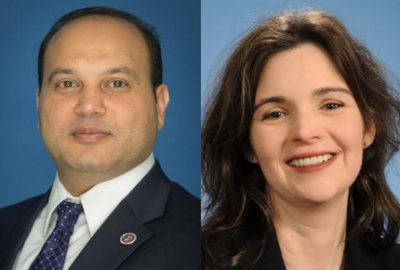
The hardest thing to have in the pandemic: A voice
Executives in large agencies use surveys to take the pulse of their workforces.
A popular notion from the early days of Silicon Valley was known as “management by walking around.” I remember the phrase but forgot the precise origin. So I looked it up. The term, although probably not the practice, seems to have originated at Hewlett-Packard in the 1970s. The idea is, managers literally wander from employee to employee to check in on how they’re doing, discovering what challenges they might be facing.
The old HP — once a model of enlightened management — eschewed closed offices. I visited there on a couple of occasions. Besides the vast cafeteria, one of the more interesting sights was David Packard’s office. If he wasn’t there, the PR functionaries would walk you by it. It, too, was an open cubicle, albeit a more spacious one than the average. This was maybe before the cubicle life devolved into the dreary caricature depicted so wickedly in Dilbert.
You can’t wander around now, not with most of the federal workforce teleworking. Some senior managers are going to their offices, but they’re largely alone. Who are you going to wander to?
At least two big-agency executives have been turning to the survey technique to “wander” among their employees. One thing it’s shown for sure, people want to be heard, to be listened to. The evidence: High return rates.
It’s something to consider as an alternative to what managers typically do in weird situations, namely to disseminate their own thoughts in emails or videos. That’s not bad, but it’s only one half of the communication requirement.
In his agency’s employee survey, Associate NASA Administrator Steve Jurczyk said some 9,000 people responded. Some 5,000 of them gave written comments. He made an important observation for large agencies. Yes, top management must take responsibility for the the well-being of employees, but “key to making sure our folks are looked after and cared for are our first-line supervisors. Branch heads of engineering organizations, or the office leads in our human capital or procurement organizations.”
That group, Jurczyk said, has received training in the use of online tools for dealing with people one-on-one or all-hands meetings, even for online socializing with the team. The training is not only in the use of the tools but also “how to look out for your people, how to engage your people … when you’re not able to meet with each other face-to-face.”
Angela Bailey, the chief human capital officer at the Homeland Security Department, said her survey drew 38,000 responses, of which 18,000 contained written comments.
Some important insights can bubble up. Bailey said DHS leadership learned one of the biggest fears among employees: Nobody wants to get on public transportation. It ranks right up there on the anxiety meter with finding child care and dealing with virtual schooling.
City buses and transit, those rolling petri dishes, were gross enough before COVID. Now they feel downright dangerous.
“I think they believe once they get to work we’ll keep them as safe as we can. But getting to work is a little unnerving,” Bailey said. That lead her office to advise the managers of DHS components, “Look guys. You’ve got to pay attention to the fact that [employees] are taking this seriously, that they’re very concerned about this. They have no alternatives to their children. So continue with maximum enhanced flexibilities to the best of your ability.”
That doesn’t just mean telework, Bailey added. “Let’s also rethink how we do work schedules,” perhaps letting people work different hours of the day than normal if they’re sharing responsibility for kids with a spouse. Or understanding if they have to jump off work for a half hour to accommodate a child’s virtual piano lesson.
Could anything be more grating than a child’s piano lesson from the tinny, choppy sound of Zoom? I’d say give the poor mom or dad another half hour to recover their ears.
Another thought, from the realm of sports:
I’ve read a half dozen obituaries for baseball pitching legend Tom Seaver. One of his nicknames, “The Franchise,” expresses a persistent theme to descriptions of his career. Namely, the halo effect of not just his talent but also of his commitment to excellence and pursuit of perfection. It transformed the hapless Mets into World Series winners.
We’ve all had colleagues — co-workers, supervisors, even underlings — with that ability to spur us on. I recall hiring a young PhD candidate for a magazine I helped found and edited in the 1980s. His blend of knowledge, intellectual rigor, curiosity and work ethic lifted the whole staff.
For those with that sort of inspirational ability, it’s harder to radiate when everyone is scattered. People don’t hear one another or talk casually. There’s only Teams or Zoom. So there’s a question: How can we inspire one another from a distance?
Nearly Useless Factoid
The inventor of the lava lamp, Edward Craven Walker, was also an avid nudist. He was a member of Spielplatz, the UK’s longest operating nudist resort, and he directed the first nudist film to achieve public release in the UK, called “Traveling Light.”
Source: Wikipedia
Copyright © 2025 Federal News Network. All rights reserved. This website is not intended for users located within the European Economic Area.
Tom Temin is host of the Federal Drive and has been providing insight on federal technology and management issues for more than 30 years.
Follow @tteminWFED
Related Stories

Among DoD leadership, eyes are now wide open to value of telework




